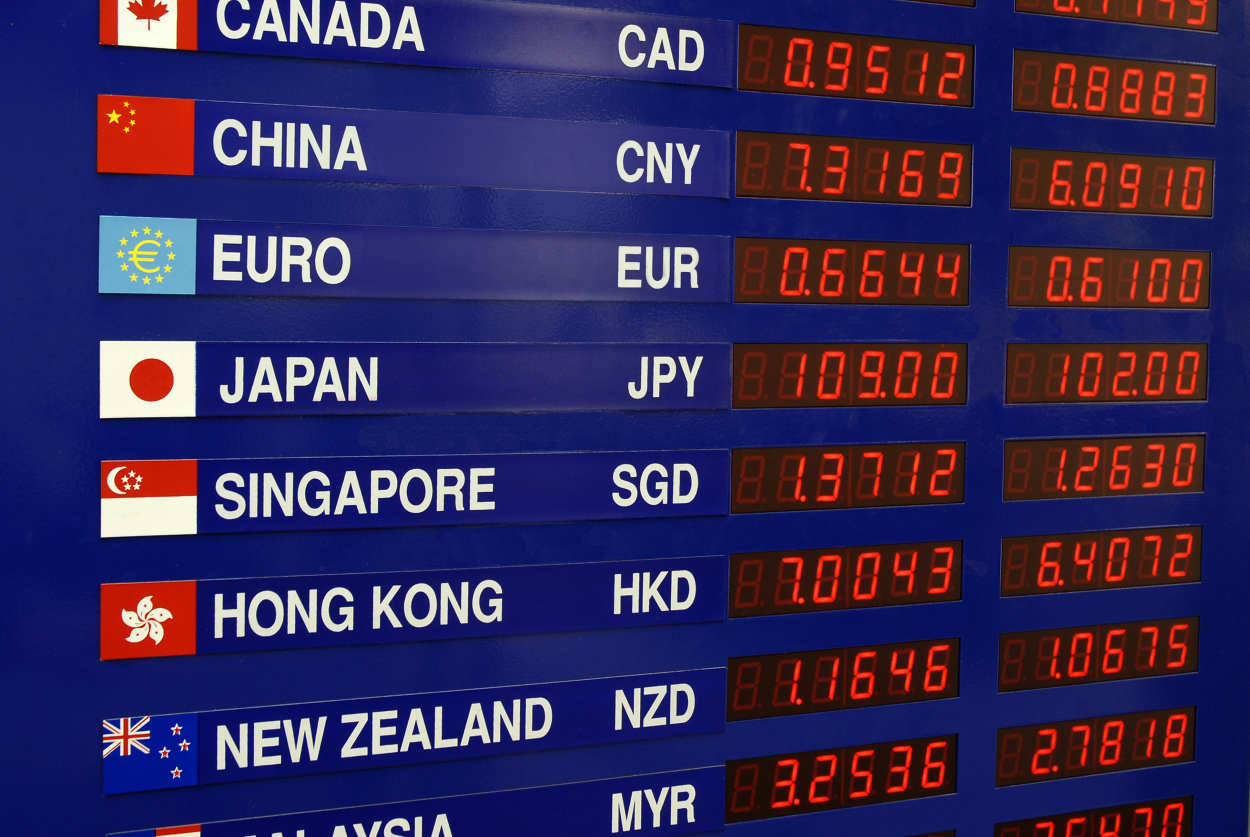The dollar and the euro are declining on the Moscow Exchange on Tuesday morning, the ruble is growing against the bi-currency basket against the background of rising oil prices and in the context of exporting companies preparing for the peak of the tax period of the month.
The first transactions in the US dollar were in the range of 56.08-56.39 rubles, according to the results of the first minute of trading, the rate was 56.155 rubles. (-18.5 kopecks to the level of the previous close). At the same time, the euro fell to 56.855 rubles. (-29.5 kopecks by Monday close). The dual-currency basket ($0.55 and EUR0.45) decreased by 23.45 kopecks. to the closing level on July 18, to 56.47 rubles.
The dollar at the same time turned out to be 40.66 kopecks. below the level of the current official exchange rate, euro – by 29.76 kopecks. below the official rate.
According to Interfax-CEA experts, the ruble is strengthening against the dollar and the euro at the start of trading in the face of rising oil prices and demand for ruble liquidity from exporting companies against the main tax payments in July. The ruble is supported by a general improvement in the attitude of global investors towards risky assets against the backdrop of reassessment by investors of the likelihood of a 100 basis points increase in the Federal Reserve System (FRS) rate at once at the July meeting.
In the middle of last week such a probability was estimated by market participants at 80%, but then, after the speeches of a number of members of the Fed’s leadership, these expectations became more moderate.
The Ministry of Finance of the Russian Federation proposed to fix the cut-off price at $60 per barrel in the updated budget rule and fix the volume of oil production at the level of 9.5 million barrels per day, Vedomosti writes, citing a source close to the government.
Representatives of the Ministry of Finance and the Ministry of Economic Development reported that a new design of budget rules is being discussed at the government site, and it is too early to talk about specific decisions. A government spokesman did not respond to the newspaper’s request.
The fact that work on a new configuration of the budget rule (the „old” one is now suspended) is in the active phase, said at the RUIE congress on June 29, Finance Minister Anton Siluanov. He said that the government next week – that is, the week of July 4 – will discuss issues related to exchange rate formation. In the context of its excessive strengthening, the Ministry of Finance proposes to influence the ruble exchange rate through a new budget rule, while interventions should be carried out through the currencies of „friendly” countries.
It was not officially reported on the consideration of the proposals of the Ministry of Finance in the government during the week from 4 to 10 July.
Last week, the Ministry of Finance announced that it had submitted proposals to the government on new parameters of the budget rule, without disclosing their details. Siluanov spoke about the proposal to include a new parameter in the rules – the volume of production (as well as export) of hydrocarbons. “If earlier there was a cut-off price as a condition for the formation of oil and gas revenues, now, in addition to the price of oil, the volumes of oil and gas supplies are important. We have made the dependence of budget revenues not only on price, but also on various options for the volume of production and export of hydrocarbons. And the average the value, which, we believe, will be in the non-risk zone for the budget, is proposed to be taken to calculate the budget rule. This will be the first innovation,” he explained.
Oil
Oil prices resumed a slight increase on Tuesday after falling earlier in Asian trading and after a strong rise the day before, after which WTI futures closed above $100 a barrel.
The cost of September futures for Brent on the London ICE Futures exchange by 10:10 on Tuesday is $106.37 per barrel, which is 0.09% higher than the closing price of the previous session. As a result of trading on Monday, these contracts rose in price by 5.1% to $106.27 per barrel.
The price of futures for WTI for August on the electronic trading of the New York Mercantile Exchange (NYMEX) is $ 102.9 per barrel by this time, which is 0.29% higher than the final value of the previous session. By the close of the market on Monday, the value of these contracts increased by 5.1% to $102.60 per barrel.
The rise in prices the day before was caused by two main factors – market participants’ assessment of the results of US President Joe Biden’s visit to Saudi Arabia and the depreciation of the dollar.
As reported, Biden discussed with the leadership of Saudi Arabia the issue of oil supplies to the world market and called this discussion „positive”, but investors felt that the country would not significantly increase production and export of fuel.
„OPEC+ will continue to control oil supplies, and one country will not be able to determine the size of the supply – at least that’s the message traders received from Biden’s visit to Saudi Arabia,” said Naeem Aslam, senior market analyst at AvaTrade.
In the meantime, the dollar, which has grown significantly in recent weeks on expectations of a tightening of the monetary policy of the Federal Reserve System (Fed), fell on Monday against major world currencies, which provided additional support to oil quotes.




